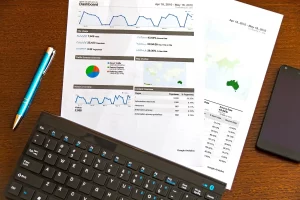Any business owner, sales professional, or consultant relies on consistent sales, and you must learn how to generate sales without winging it. Superior performance usually indicates that a salesperson has taken the time to groom their skills and is constantly iterating to better help prospects.
Read on for expert guidance on becoming a sales rep and how to be a good one, whether you’re new to the business or want to improve your skills. Here are five basic sales strategies for novices who wish to learn the principles of successful selling.
Table of Contents
1. Know your targeted audience
Identifying your ideal customer profile is one of the simplest ways to think about your audience. This is a simple but efficient method of limiting your target market to individuals who are most likely to purchase your product.
This profile is often made up of logistical and geographic information, including company size, turnover, location, and the job description of the individual you’ll be conversing with If you don’t have more detailed information, you can combine this with primary quantitative and qualitative data.

2. Know what you are selling
When you thoroughly understand your product, you can speak freely about its capabilities and characteristics. When the circumstance calls for it, you’re also more willing to go “off script” (i.e., improvise).
You can also respond to any number of hyper-specific or situational inquiries that the customer may pose.
Knowing your product well can also enable you to speak passionately about it. This may impact how customers perceive the thing you’re attempting to offer.
Do not forget to follow up.

3. Customers want value, not products
The consumer indeed wants to know precisely what they’re purchasing. However, they want to know that the solution they’re buying will address their problem. It’s also vital to remember that prospects may become overwhelmed if they only need to use one or two of your product’s capabilities. They may believe they can obtain a better price elsewhere in this scenario.
Select the features that you believe will relate to their situation and explain how these requirements can be used to solve their problem. By doing so, you’re selling the product’s value, which is greater than the sum of its parts.

4. Take rejection as a learning opportunity.
Failure should not be used as a justification to continue thinking or doing the same way. Don’t take it personally; instead, try to determine why your project failed. Consider your pitch, presentation, techniques, and the reaction of your client or consumer. Try to figure out which sections they liked and didn’t.
However, it is worth mentioning that this might be taken too far and lead to over-criticism. This might hurt self-esteem. So, learn how to reflect on and learn from your mistakes properly.

5. Be regulars in follow up
Whether your presentation went well or poorly, failure to follow up could lose a special deal. Sending emails might be the most professional and practical way to go about it. After all, it might be tailored to the relationship you’ve established with the potential customer. Emails sent to connect with clients, emails sent immediately after a meeting to acknowledge their time spent with you, emails sent to continue a prior conversation, and emails sent to verify whether the sale is happening or not are just a few examples of the many types of follow up emails sent.

Bottom line:- Honesty is the key
When you’re in a high-pressure position, it’s tempting to say anything the lead wants to hear to close the deal. However, a customer complains about something that has been falsely promised. Consequently, your company’s reputation will suffer.
Honesty will impress your prospects – even if it’s not what they want to hear right now – and they’ll likely return to you in the months or years ahead when they have a genuine requirement for your product or service. Instead of distorting the truth to win every sale, concentrate on serving the consumers to whom you can genuinely give value.





